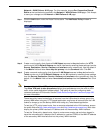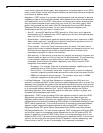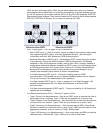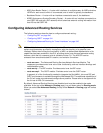
Network > Routing
335
SonicOS 5.8.1 Administrator Guide
For example, if you had 8 class C networks: 192.168.0.0/24 through 192.168.7.0/
24, rather than having to have a separate route statement to each of them, it would
be possible to provide a single route to 192.168.0.0/21 which would encompass
them all.
This ability, in addition to providing more efficient and flexible allocation of IP address
space, also allows routing tables and routing updates to be kept smaller.
• Autonomous system topologies – An autonomous system (AS) is a collection of routers that
are under common administrative control, and that share the same routing characteristics.
When a group of autonomous systems share routing information, they are commonly
referred to as a confederation of autonomous systems. (RFC1930 and RFC975 address
these concepts in much greater detail). In simple terms, an AS is a logical distinction that
encompasses physical network elements based on the commonness of their
configurations.
With regard to RIP and OSPF, RIP autonomous systems cannot be segmented, and all
routin
g information must be advertised (broadcast) through the entire AS. This can become
difficult to manage and can result in excessive routing information traffic. OSPF, on the
other hand, employs the concept of Areas, and allows for logically, manageable
segmentation to control the sharing of information within an AS. OSPF areas begin with the
backbone area (area 0 or 0.0.0.0), and all other areas must connect to this backbone area
(although there are exceptions). This ability to segment the routing AS helps to ensure that
it never becomes too large to manage, or too computationally intensive for the routers to
handle.
OSPF Terms
OSPF is substantially more complicated to configure and maintain than RIP. The following
concepts are critical to understanding an OSPF routing environment:
• Link state – As it pertains to OSPF, a link is an egress interface on a router, and the state
describes characteristics of that interface, such as its cost. Link states are sent in the form
of Link State Advertisements (LSA) which are contained within Link State Update (LSU)
packets, one of five types of OSPF packets.
• Cost – A quantification of the overhead required to send a packet along a particular link.
Cost is calculated by dividing a reference bandwidth (usually 100mbit, or 10^8 bit) by an
interface’s speed. The lower the cost, the more preferable the link. Some common path
costs:
• Area – The network comprising the group of OSPF routers intended to share a common
Link State Database. OSPF networks are built around the backbone area (area 0, or
0.0.0.0) and all other areas must connect to the backbone area (unless virtual links are
Interface Divided by 10^8 (100mbit)
= OSPF Cost
Fast Ethernet 1
Ethernet 10
T1 (1.544mbit) 64
DSL (1mbit) 100
DSL (512kbps) 200
64kbps 1562
56kbps 1785


















